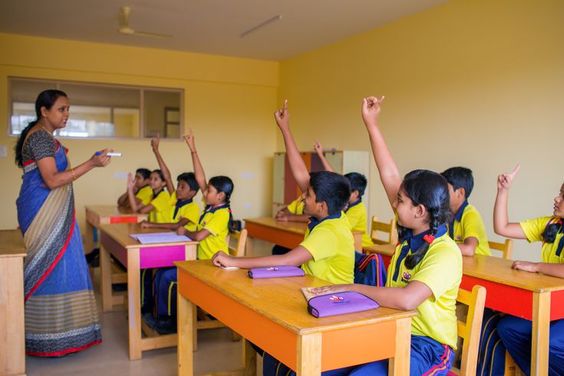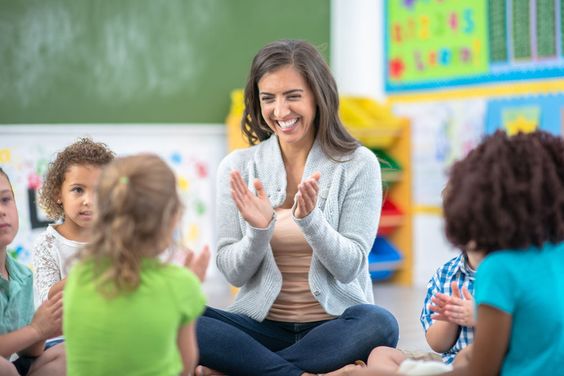Understanding the Power of Positive Reinforcement in the Classroom
In the realm of education, one of the most powerful tools for shaping behavior and encouraging a positive learning environment is positive reinforcement. This technique involves recognizing and rewarding desirable behaviors to reinforce them and increase their occurrence. While the concept of positive reinforcement is simple, its impact on students and teachers’ lives is profound.
Positive reinforcement works on the principle that individuals are more likely to repeat behaviors when they are followed by a positive consequence. In the classroom setting, this could range from a simple verbal praise to tangible rewards like stickers or certificates. Teachers who effectively implement this, will create a supportive and encouraging atmosphere that fosters students’ growth and development.

The significance of positive reinforcement goes beyond merely motivating students to behave well; it also enhances the overall learning experience. When students receive positive feedback, their self-esteem and confidence are bolstered, leading to greater engagement and a willingness to participate actively in class discussions. Moreover, it helps to build a strong teacher-student relationship based on trust and mutual respect.
Benefits of Positive Reinforcement for Students’ Academic Performance
Academic success is a shared goal of educators, students, and parents alike. Positive reinforcement plays a crucial role in influencing students’ academic performance positively. When students are rewarded for their efforts and achievements, they are more likely to exhibit a positive attitude towards learning and are motivated to excel academically.
One of the key benefits of positive reinforcement is that it cultivates a growth mindset among students. Instead of fearing failure, students become more willing to take on challenges and view mistakes as opportunities for learning and growth. This shift in mindset allows them to approach difficult tasks with determination and resilience.

Positive reinforcement also aids in the development of intrinsic motivation, which is essential for long-term academic success. When students are intrinsically motivated, they find joy in learning for its own sake, rather than being solely driven by external rewards or fear of punishment. This love for learning becomes a lifelong asset, empowering students to become self-directed learners even beyond the classroom.
Additionally, positive reinforcement fosters a positive classroom atmosphere where cooperation and collaboration thrive. As students are encouraged to support and celebrate each other’s successes, a sense of camaraderie is cultivated, leading to a more inclusive and supportive learning environment.
The Impact on Teachers’ Well-being and Job Satisfaction
While much emphasis is placed on the influence of positive reinforcement on students, its impact on teachers should not be overlooked. Educators play a crucial role in shaping students’ lives, and their job satisfaction and well-being are paramount to their effectiveness in the classroom.
Positive reinforcement not only benefits students but also significantly contributes to teachers’ well-being. When teachers witness the positive impact of their efforts on students’ growth, it fosters a sense of accomplishment and fulfillment in their profession. This positive feedback loop motivates teachers to continue delivering high-quality education and maintain their passion for teaching.

Moreover, a positive and supportive classroom environment reduces teacher stress and burnout. When teachers focus on reinforcing positive behaviors rather than constantly addressing negative ones, they experience a more rewarding teaching experience. Positive reinforcement also enhances classroom management, as students are more likely to be attentive and respectful when positive behaviors are consistently acknowledged.
Furthermore, when teachers employ positive reinforcement techniques, they strengthen their bond with students, creating a more harmonious teacher-student relationship. This connection fosters open communication, allowing teachers to better understand their students’ needs and tailor their teaching approaches accordingly.
Conclusion
Positive reinforcement is a powerful tool that holds immense significance for both students and teachers. By implementing this technique in the classroom, educators can create a positive and encouraging learning environment that enhances students’ academic performance and fosters their personal development. Simultaneously, teachers benefit from increased job satisfaction and well-being, enabling them to be more effective in their noble profession.

As we recognize the far-reaching impact of positive reinforcement, it becomes evident that nurturing a positive educational environment is not only essential for academic growth but also for the holistic well-being of students and teachers alike. Embracing the philosophy of positive reinforcement is a testament to the transformative power of encouragement, support, and celebration in the journey of education.

